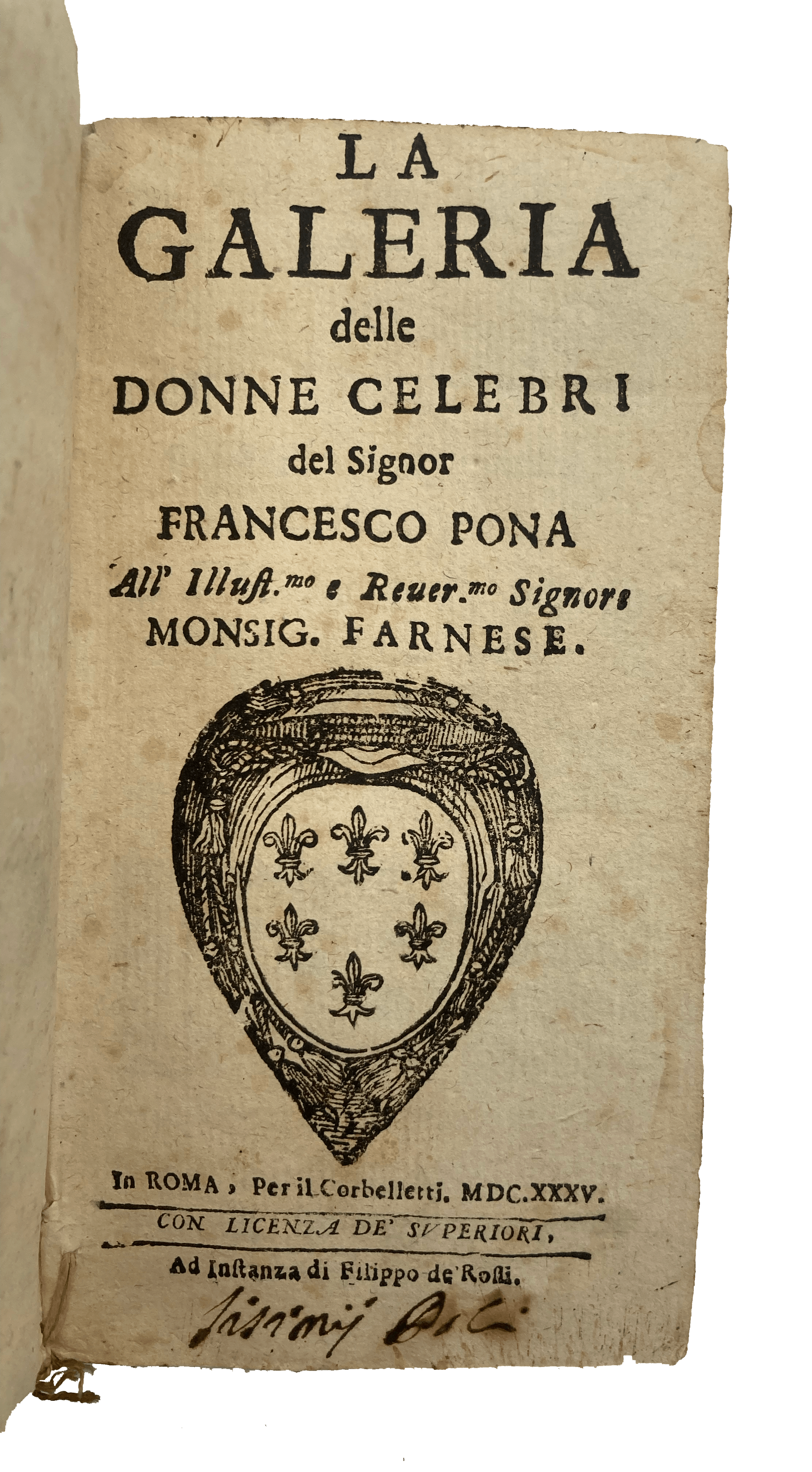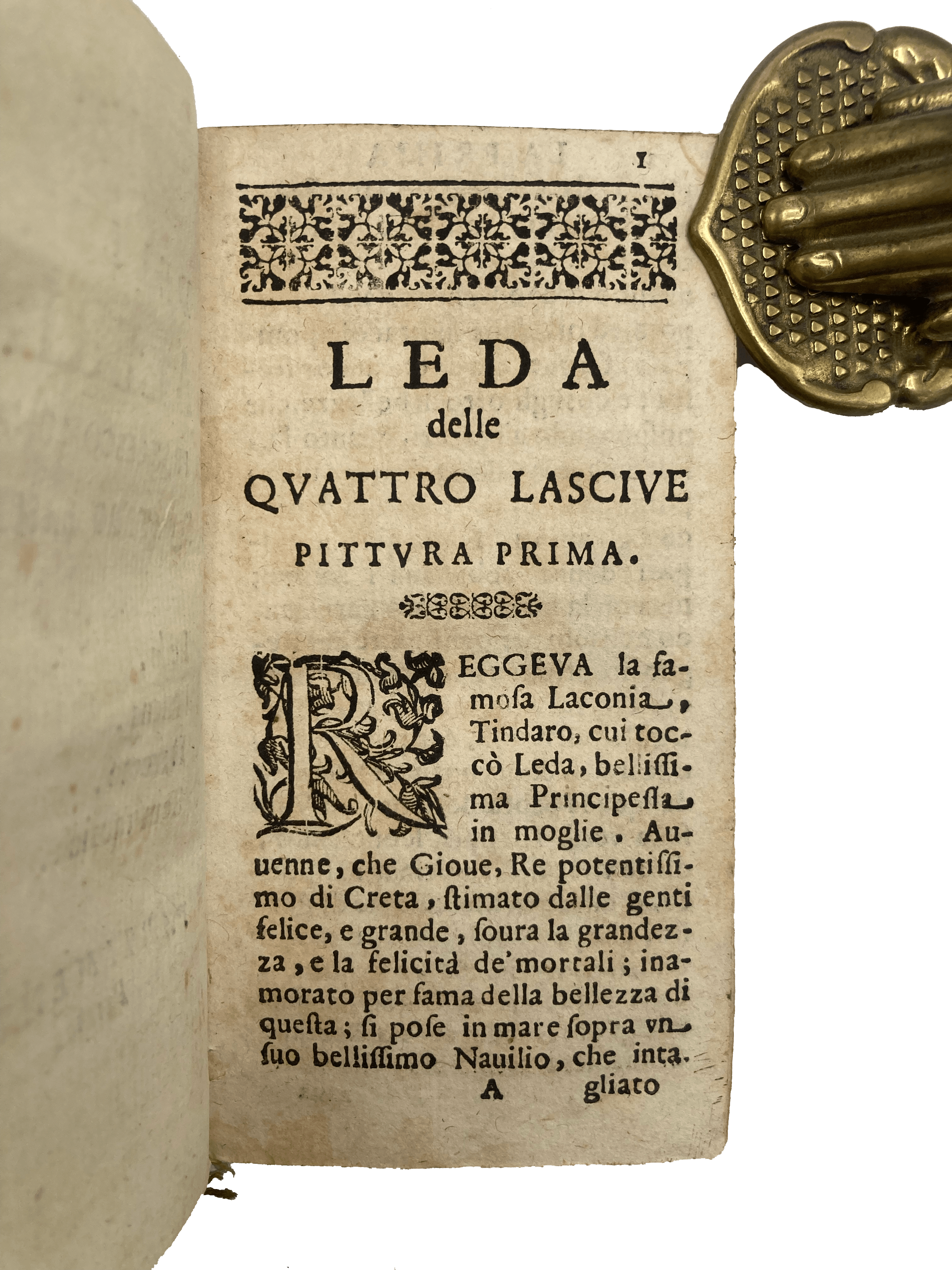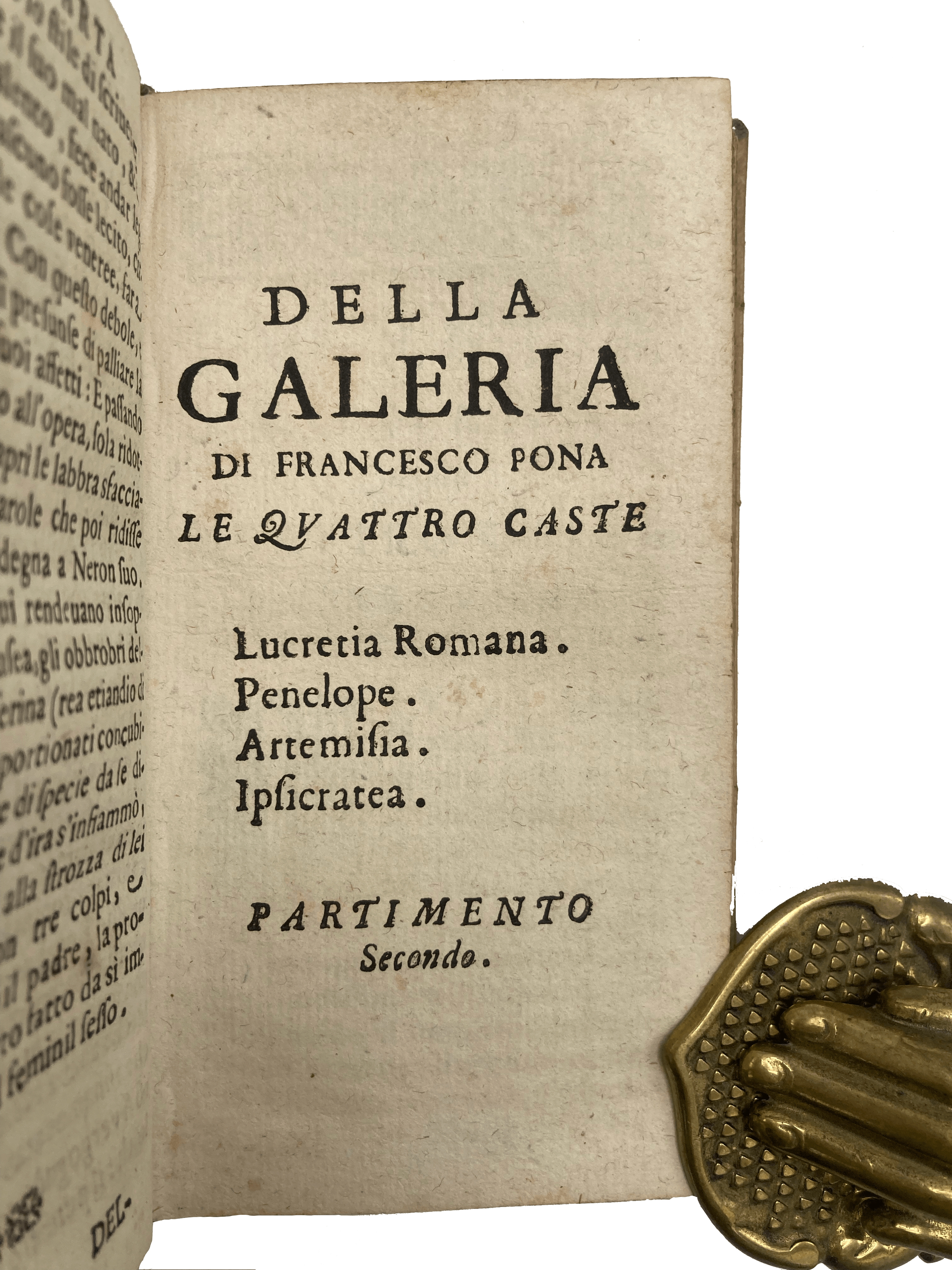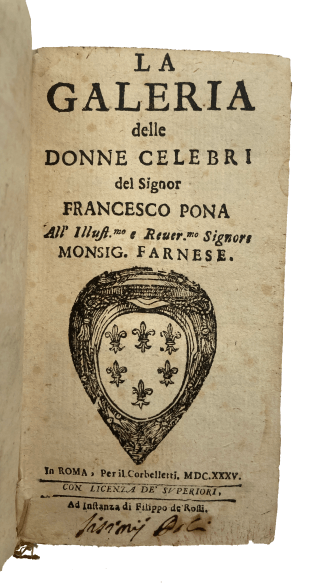PONA, Francesco
NO COPIES IN THE US
La Galeria delle Donne Celebri.
Rome, Per il Corbilletti, 1635.£2,250.00
12mo. pp. [16], 147, [1]. Roman letter. Woodcut Farnese arms to title, woodcut printer’s device to last verso, decorated initials and ornaments. Light age yellowing, gathering G browned, small ink smudge to half-title. A very food copy in contemporary vellum, early ms title to spine, all edges sprinkled red, early autograph ‘Trissonii’ (?) at the foot of title.
A popular work, scarce in all editions, comprising 12 short stories about as many famous women, four lascivious (Leda, Helena, Derceto, Semiramide), four chaste (Lucretia, Penelope, Artemisia, Ipsicratea), and four holy (La Maddalena, St Barbara, St Monica, St Elisabeth Queen of Hungary). The first four editions, all issued in 1633, survive in a handful of copies or less; this fifth also survives in a handful. Francesco Pona (1595-1655) was a physician from Verona, a poet inspired by Marinist theories, and a member of the controversial, anti-clerical Accademia degli Incogniti, in Venice. In 1892, his ‘Galeria’ was described as ‘a forgotten jewel of Italian literature’ (Kubas, pp.189-90). It follows the genre of female hagiography, inspired, among others, by Boccaccio, which was popular in the C17. ‘Pona […] constructed his “Galeria” by absorbing the post-Tridentine culture of sanctity. His “Galeria” distinguishes very clearly among types of women, dividing them into three sequences. Each sequence is composed of four pitture (“pictures” or “portraits”), namely depictions of lascivious women, chaste women, and saints, with the first two sequences including only pre-Christian women. The Council of Trent […] affirmed the idea of people being instructed in an understanding of God through “analogies” and “similitudes” thanks to the model of the saints, and Pona’s examples are chosen to be unequivocally either condemnable or redeemable’ (Kubas, p.193). Among the saints are Mary Magdalene, connecting pre-Christian antiquity with Christian times, Monica of Hippo, St Augustine’s mother, and Elizabeth of Hungary, whose life was imbued with mysticism and reflects the genre of Counter-Reformation hagiographic accounts. A very interesting work, which ‘reveals something about the religious and scientific culture of the period and how this culture influenced the literary representation of women at that time’ (Kubas, p.190).
USTC 4008830; Gay 380: ‘Notice curieuse sur douze femmes célèbres dans l’histoire, dont quatre lascives, quatre chastes et quatre saintes.’ M.M. Kubas, ‘“Quella importanza di materia”: Women and saints in Francesco Pona’s Galeria delle Donne Celebri’, 42 (2021), Quaderni d’italianistica, pp.189–206.




